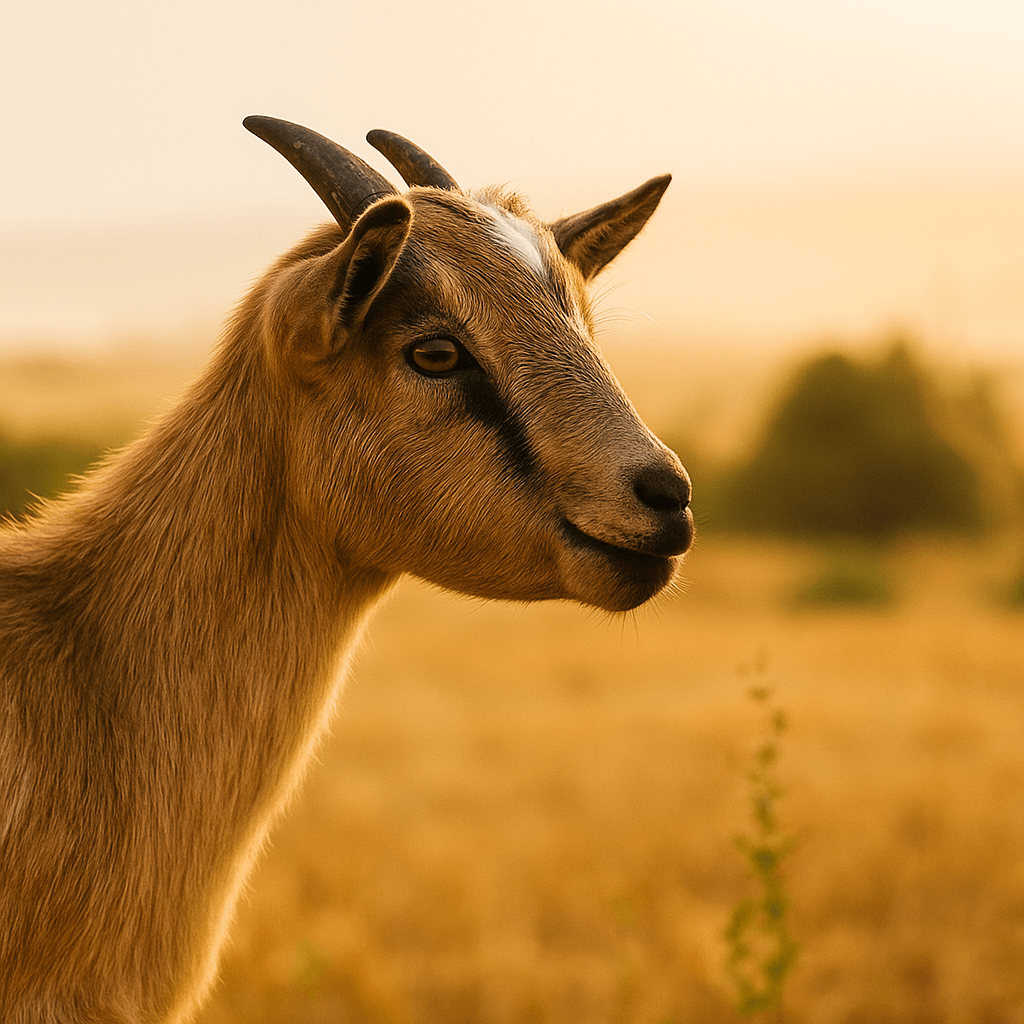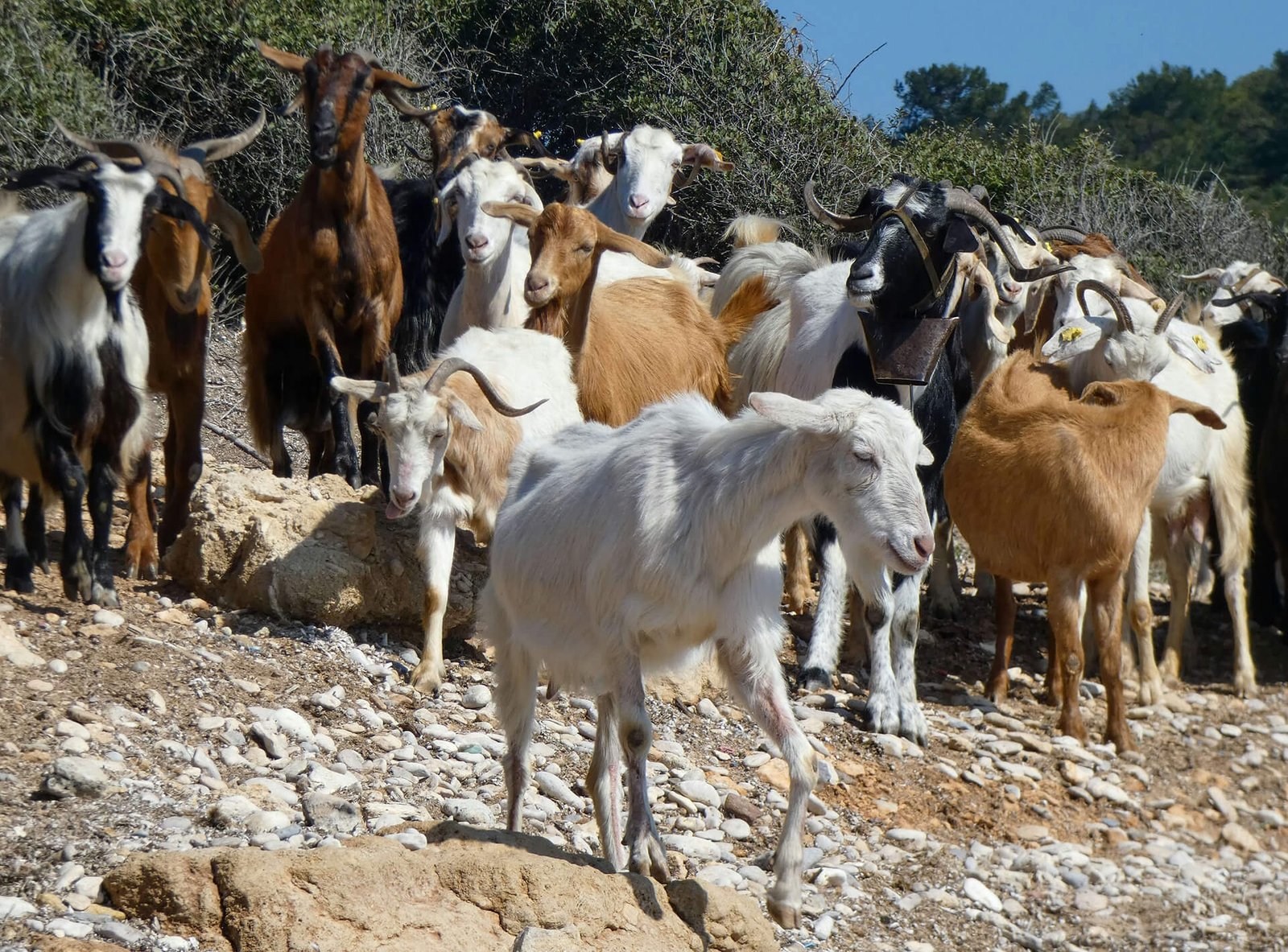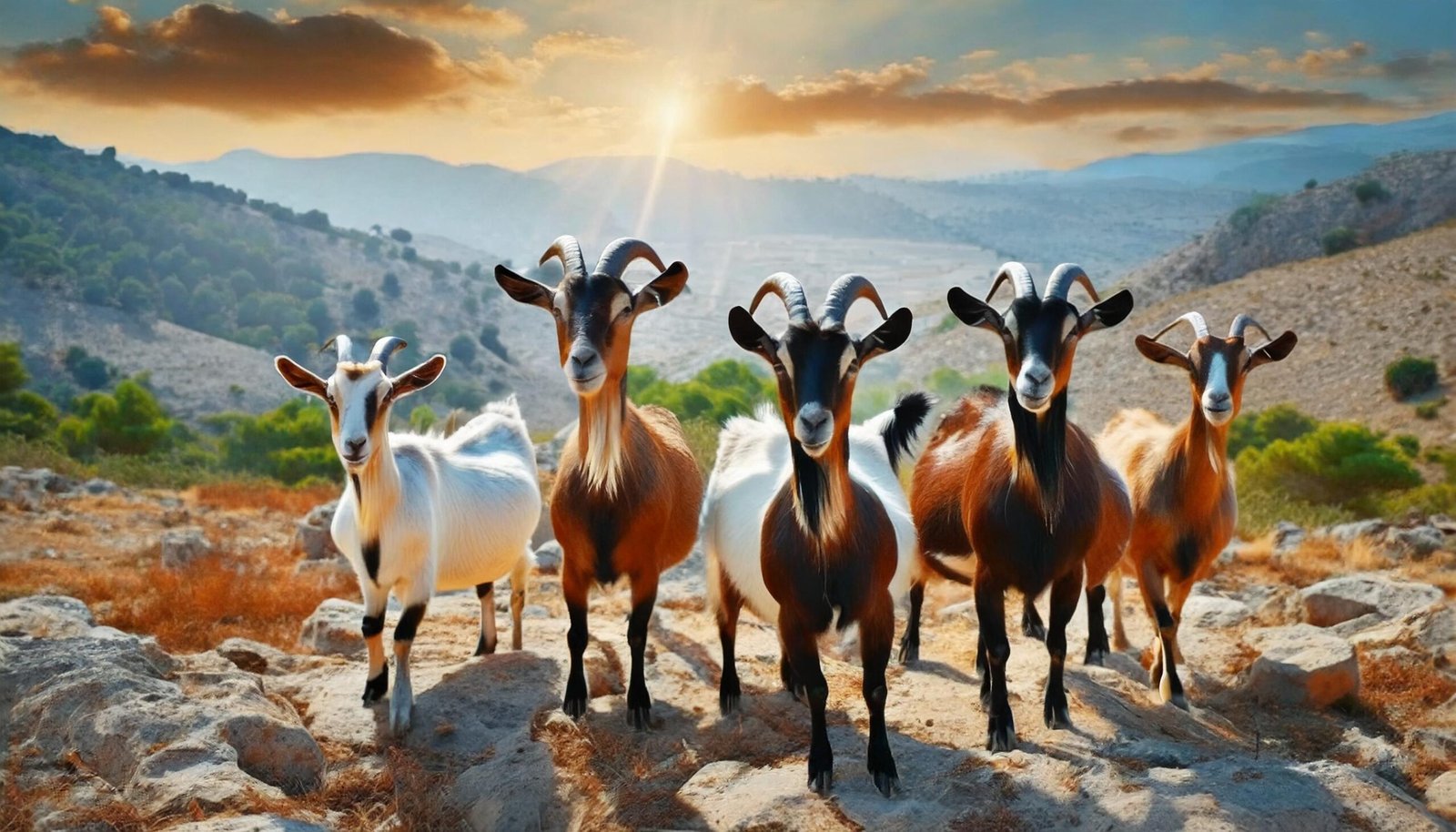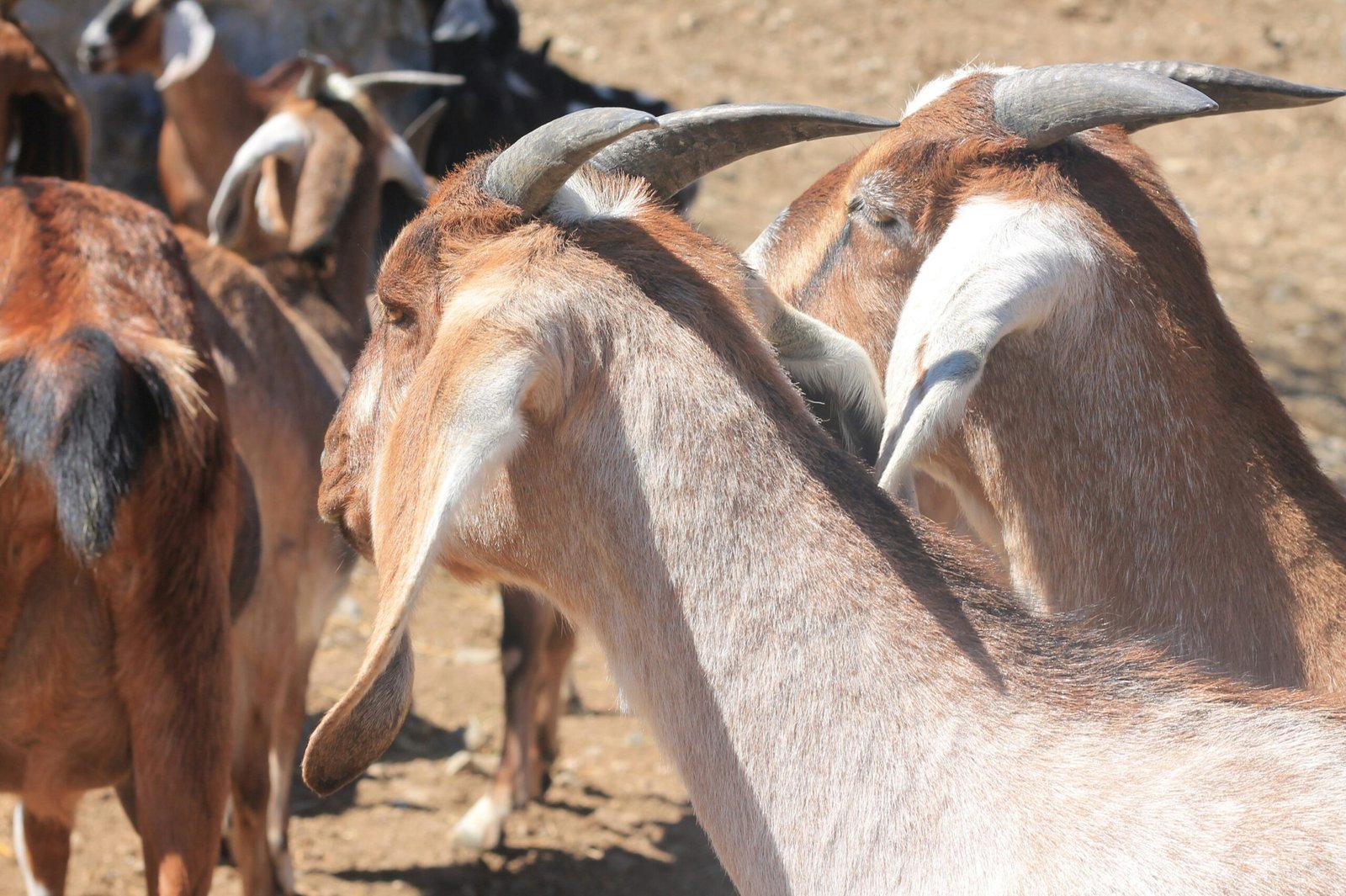Goat farming has long played a crucial role in supporting rural livelihoods and sustaining traditional agricultural practices in the semi-arid regions of Morocco. Among the country’s diverse goat breeds, the Draa goat is renowned for its resilience, adaptability, and valuable milk production, which forms a vital part of the local economy and cultural heritage. However, like many livestock systems in the Mediterranean and North African regions, Draa goat farming faces persistent challenges: fluctuating climatic conditions, emerging animal health threats, the need for sustainable resource use, and pressure to meet modern quality standards for dairy products.
To address these challenges, innovative solutions that blend traditional knowledge with cutting-edge technology are becoming indispensable. One such promising approach is the integration of smart health sensors into daily goat management. This use case, titled Smart Sensors for Goat Health, demonstrates how precision livestock farming can transform the Draa goat value chain in the Meknes region of Morocco. It highlights the tangible benefits of smart monitoring systems for improving animal welfare, boosting milk yield, and enhancing overall farm sustainability — all aligned with global goals for climate-smart agriculture and sustainable rural development.
The Draa Goat: A Pillar of Resilient Livestock Farming
The Draa goat is native to Morocco’s Draa Valley and surrounding arid areas. Over generations, this breed has evolved traits that enable it to thrive under harsh environmental conditions, including limited forage and irregular water availability. Draa goats are prized for their moderate but consistent milk yield, with an average production of around 110 liters per month under optimal conditions. This milk, often processed into traditional cheeses and yogurts, holds economic significance for smallholder families, providing both nutrition and income diversification.
However, maximizing the productivity and health of this indigenous breed requires more than just traditional husbandry techniques. As climate change intensifies the unpredictability of grazing resources and increases the risk of disease outbreaks, farmers must adopt more resilient and responsive management practices. This is where smart sensor technologies come into play.
Bringing Smart Technology to Goat Herding
Smart health sensors represent a leap forward in how herders and farm managers can observe, diagnose, and respond to the daily needs of each animal. These small, wearable devices are designed to monitor vital health indicators such as body temperature, heart rate, movement patterns, and feeding behavior in real time. Data collected by the sensors is transmitted to a central platform, accessible via mobile apps or desktop dashboards. Farmers can receive instant alerts about any abnormal signs that could indicate illness, injury, stress, or reproductive changes.
In the context of the Draa goat population in Meknes, the adoption of smart health sensors offers multiple benefits:
- Early Detection of Diseases: Sensors can help detect subtle health issues before they escalate into severe diseases. This reduces veterinary costs, minimizes animal suffering, and prevents productivity losses.
- Optimized Feeding and Grazing: By analyzing movement and feeding patterns, farmers can better manage grazing rotations and supplementary feeding, ensuring goats receive balanced nutrition even during dry periods.
- Improved Reproductive Management: Heat detection and monitoring of breeding cycles can be automated, leading to higher reproductive success rates and more efficient herd management.
- Reduced Labor and Time: Traditional herding relies heavily on visual inspection and manual tracking, which are time-consuming and can miss early warning signs. Automated data collection frees up time for other essential farm activities.
Together, these benefits contribute to higher milk yield, better herd health, and a more sustainable goat farming model. For smallholders who may operate with limited resources, this technology empowers them to make informed decisions based on reliable data, improving their economic resilience.
Pilot Implementation in Meknes
The pilot phase of this initiative began in 2023, with selected goat farms in the Meknes region. This area, known for its mixed farming systems and emerging agri-tech ecosystem, provides an ideal setting to test smart sensor solutions in real-life pastoral conditions.
The project started with the distribution of wearable sensor kits to participating farmers, accompanied by training sessions on installation, mobile app usage, and interpreting data dashboards. Local veterinary officers and agricultural extension agents were also trained to provide technical support and ensure smooth integration into existing husbandry routines.
Initial feedback from farmers has been overwhelmingly positive. Many report a noticeable improvement in herd health monitoring and greater confidence in managing individual goats, especially lactating females. Several farms observed a reduction in unexpected health incidents and a gradual increase in monthly milk yields, aligning with the project’s target of maintaining an average 110 liters per goat per month under improved management conditions.
Enhancing Sustainability and Climate Resilience
One of the core objectives of the Smart Sensors for Goat Health use case is to elevate the sustainability score of goat farming in the region. By promoting better resource management, reducing feed waste, and minimizing disease-related losses, the initiative contributes to more efficient and environmentally responsible livestock practices.
A sustainability score of 8 reflects the project’s alignment with best practices in animal welfare, low-carbon production methods, and socio-economic sustainability. Moreover, by enabling smallholders to adapt proactively to changing climate conditions, the use of smart sensors supports long-term resilience goals set by both national agricultural strategies and international frameworks such as the UN Sustainable Development Goals (SDGs).
Challenges and Lessons Learned
While the benefits are clear, the deployment of smart sensors in traditional farming communities is not without challenges:
- Cost and Affordability: For small-scale farmers, the initial investment in sensor devices and data subscriptions can be a barrier. Subsidies, micro-loans, or cooperative purchasing schemes are potential solutions.
- Digital Literacy: Successful adoption requires familiarity with mobile apps and digital dashboards. Continuous capacity building is essential to ensure that farmers fully utilize the technology.
- Infrastructure and Connectivity: Reliable internet and mobile network coverage are prerequisites for real-time data transmission. Some rural areas may still face connectivity gaps.
Through pilot trials in Meknes, these challenges have provided valuable insights for scaling up. Tailored training, community demonstrations, and peer-to-peer learning have proven effective in building trust and encouraging widespread adoption.
Future Prospects and Scaling Up
The promising results from the Meknes pilot pave the way for wider dissemination across Morocco and other arid and semi-arid regions of North Africa. Scaling up will involve partnerships with local cooperatives, agricultural extension services, and technology providers to make smart health sensors more accessible and affordable for a broader base of goat farmers.
Additionally, integrating sensor data with broader farm management platforms and regional livestock databases could open new avenues for precision agriculture, genetic selection, and traceability systems that benefit the entire dairy value chain. Researchers and policymakers alike can leverage aggregated sensor data to monitor animal health trends, plan disease prevention strategies, and assess the impacts of climate variability on livestock systems.
Empowering Women and Youth in Rural Communities
An often overlooked but vital aspect of this innovation is its potential to empower marginalized groups within the farming community. In many Moroccan rural households, women and youth play significant roles in daily livestock care but may lack decision-making power or access to modern tools. By simplifying herd management and offering real-time data, smart sensors can enhance the agency of women and young farmers, encouraging greater participation in decision-making and entrepreneurship within the agricultural sector.
Contributing to a Smarter Agricultural Future
The Smart Sensors for Goat Health use case exemplifies how combining traditional livestock knowledge with 21st-century technology can unlock new opportunities for sustainable rural development. In Meknes, the Draa goat stands as a testament to centuries of adaptation and resilience — qualities now amplified by digital innovation.
As this initiative expands, it will continue to generate valuable lessons for integrating smart farming solutions across diverse pastoral landscapes. By championing such innovations, Morocco takes a decisive step toward a smarter, more sustainable agricultural future where technology and tradition work hand in hand for the benefit of communities, animals, and the environment alike.





